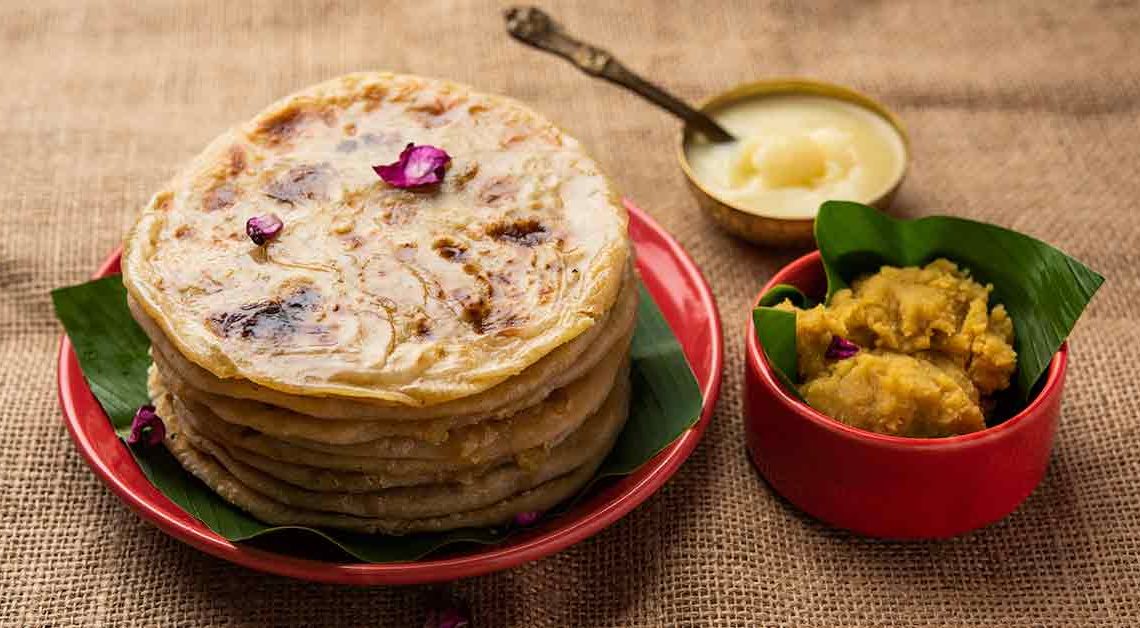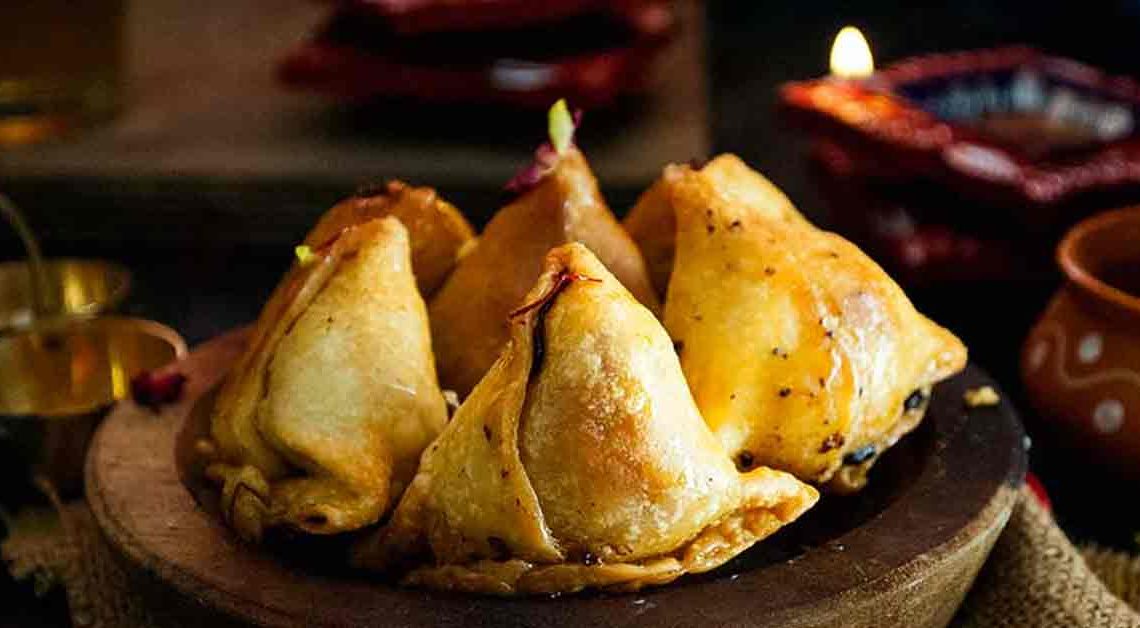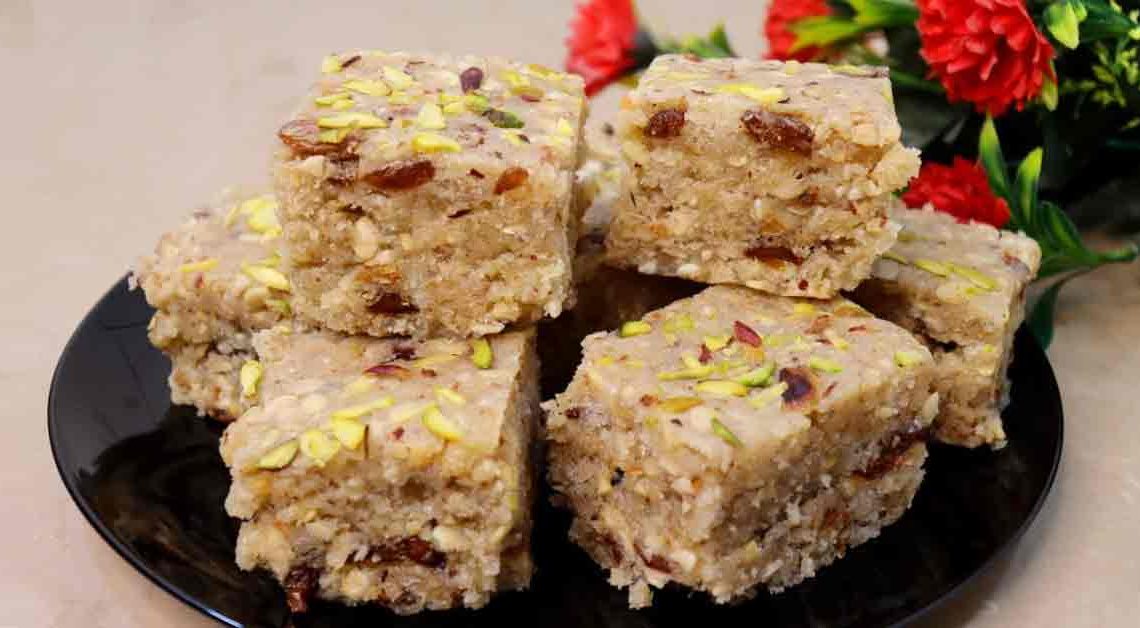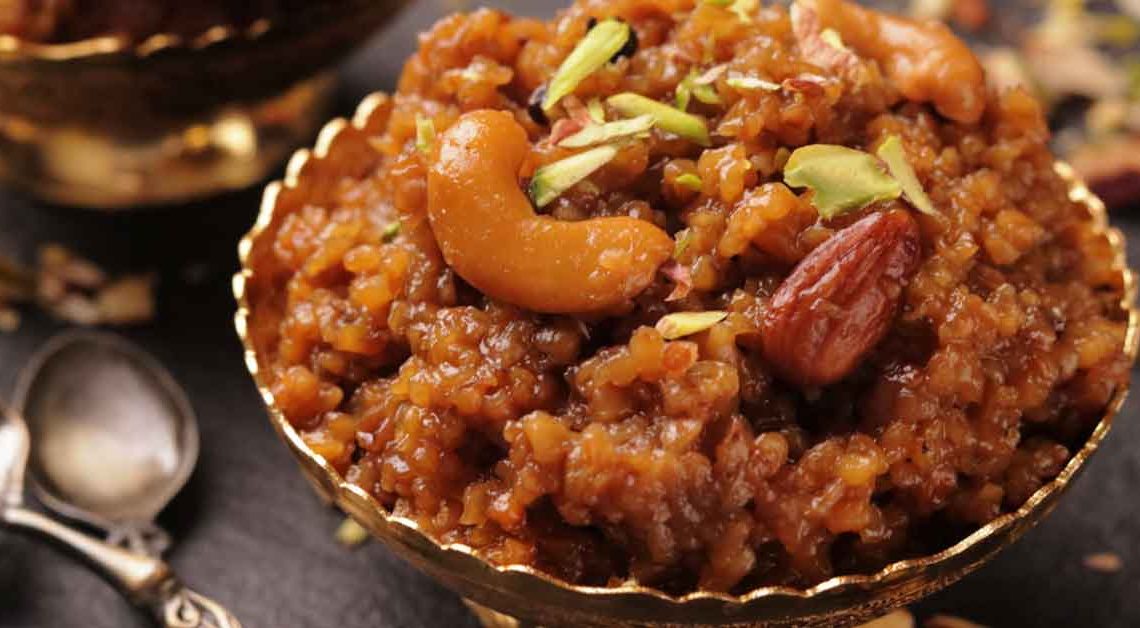A Taste of Tradition: Exploring the Deliciousness of Puran Poli

Welcome to our flavorful journey on Mithainama! Today, we embark on a delightful adventure to uncover the secrets behind one of India’s most cherished sweet treats: Puran Poli. As we delve into the aromatic world of this traditional delicacy, prepare to awaken your taste buds and discover the captivating stories woven into each bite.
The allure lies not only in its heavenly taste but also in the artistry involved in its creation. Passed down through generations, the recipe for this sweet flatbread demands patience, skill, and a touch of love. From preparing the delectable filling, known as “Puran,” to expertly encasing it in the soft, thin dough, every step is a testament to the culinary traditions upheld by the Indian households.
Get ready to embark on a culinary adventure like no other as we unravel the secrets behind the enchanting Puran Poli. Let the sweet symphony of Puran Poli serenade your taste buds, one heavenly mouthful at a time!
Origin of Puran Poli
Originating from the state of Maharashtra in Western India, Puran Poli holds a rich culinary heritage that can be traced back centuries. This beloved sweet dish has deep roots in Marathi cuisine and is an integral part of Maharashtrian culture and festivals.
Today, it has transcended regional boundaries and gained popularity throughout India and even internationally. It is celebrated for its harmonious blend of flavors, the skill required in its preparation, and the nostalgic memories it evokes. Whether enjoyed warm with a dollop of ghee or served with a side of milk or yogurt,and continues to delight food enthusiasts, paying homage to its ancient origins while embracing contemporary interpretations.
History of Puran Poli
The history of Puran Poli dates back several centuries and is deeply rooted in Indian culinary traditions. Originating from the state of Maharashtra, Puran Poli has evolved over time, reflecting the cultural influences and regional variations of different communities.
The exact origin is unclear, as it predates recorded history. However, references to a similar dish called “Puranvadi” can be found in ancient Hindu scriptures, indicating that a sweet stuffed bread existed during those times. The recipe has been passed down through generations, with each family adding their own twist to the dish.
Throughout history, it has undergone variations based on regional preferences. For instance, in some parts of Maharashtra, a pinch of turmeric is added to the dough, giving the poli a yellow hue. In other regions, the filling may include additional ingredients like grated coconut, saffron, or dry fruits, enhancing the flavor and texture.
Cultural Significance
Puran Poli holds significant cultural importance in various aspects of Indian society. Its symbolic value, association with festivals, and role in social gatherings contribute to its cultural significance. Here are some key aspects of the cultural importance of Puran Poli:
Festivals and Celebrations: It is a staple dish during festive occasions, especially Holi and Ganesh Chaturthi in Maharashtra. It is prepared and shared with family and friends, symbolizing the spirit of togetherness, love, and celebration.
Symbolism and Rituals: It carries symbolic significance. The sweet filling, or “Puran,” represents the essence of life and is associated with abundance, joy, and prosperity. The process of rolling and cooking the poli is seen as a ritualistic act, signifying the blending of various elements of life and the creation of harmony.
Culinary Heritage: It is an integral part of Maharashtrian culinary heritage. It has been passed down through generations, preserving traditional cooking techniques and flavor profiles.
Where is Puran Poli Famous?
It is most famous and widely consumed in the state of Maharashtra, India. It is considered a staple and traditional delicacy of Maharashtrian cuisine. Within Maharashtra, and holds significant popularity and is cherished in cities like Mumbai, Pune, Nagpur, Nashik, and Kolhapur.
While its roots lie in Maharashtra, Puran Poli’s fame has spread beyond the state, and it is enjoyed in various regions of India. It has gained recognition and popularity in neighboring states like Goa, Karnataka, Gujarat, and parts of South India.
It has also transcended national boundaries due to the Indian diaspora and the presence of Indian restaurants around the world. It is relished by the Indian community and food enthusiasts in countries with a significant Indian population, including the United States, the United Kingdom, Canada, Australia, and the Middle Eastern countries.
Interesting Facts and Trivia
Certainly! Here are some interesting facts and trivia related to Puran Poli:
- It has been mentioned in ancient Hindu scriptures like the Bhavishya Purana and the Matsya Purana. These references indicate that a similar sweet stuffed bread existed during those times, showcasing the dish’s long-standing history.
- While it is widely associated with Maharashtra, it is prepared with variations in different regions of India. For example, in Gujarat, it is known as “Puran Puri,” and in Karnataka, it is called “Holige” or “Obbattu.”
- It is an integral part of Maharashtrian festivals like Holi and Ganesh Chaturthi. During Holi, it is often prepared and shared among friends and family, adding sweetness to the vibrant celebrations.
- The process of rolling out the dough and stuffing it with the sweet filling requires skill and finesse. Achieving the perfect balance between the dough and filling consistency and ensuring a thin, even layer of dough is rolled out is considered a mark of expertise in making it.
- While Puran Poli is primarily known as a sweet dish, some regional variations incorporate a savory twist. In parts of Maharashtra, a savory version called “Katachi Amti” is made with the leftover water from cooking the chana dal for the filling.
Did You Know?
Did you know that Puran Poli not only satisfies your taste buds but also offers several health benefits?
- It contains a combination of lentils, whole wheat flour, jaggery, and aromatic spices. It provides essential nutrients like protein, dietary fiber, iron, and vitamins, contributing to a well-rounded and nutritious meal.
- The dietary fiber present aids in digestion and promotes healthy bowel movements. It helps prevent constipation and keeps the digestive system functioning smoothly.
- It is a wholesome dish that provides a sustained release of energy due to its combination of complex carbohydrates and protein-rich lentils. It can provide a significant energy boost, making it an ideal choice for breakfast or as a midday snack.
- The lentils used in it are a good source of iron. Iron is essential for the production of red blood cells and helps prevent iron deficiency anemia. Including this in your diet can contribute to maintaining healthy iron levels in the body.
- Spices like cardamom and nutmeg used in Puran Poli possess antioxidant properties. These antioxidants help protect the body’s cells from damage caused by harmful free radicals, reducing the risk of chronic diseases and promoting overall well-being.







